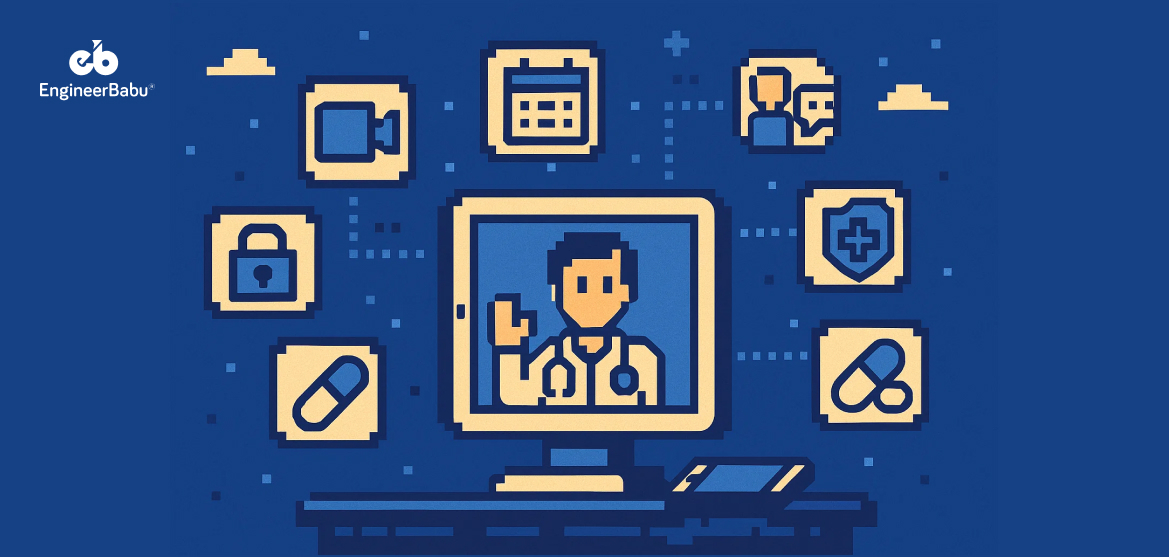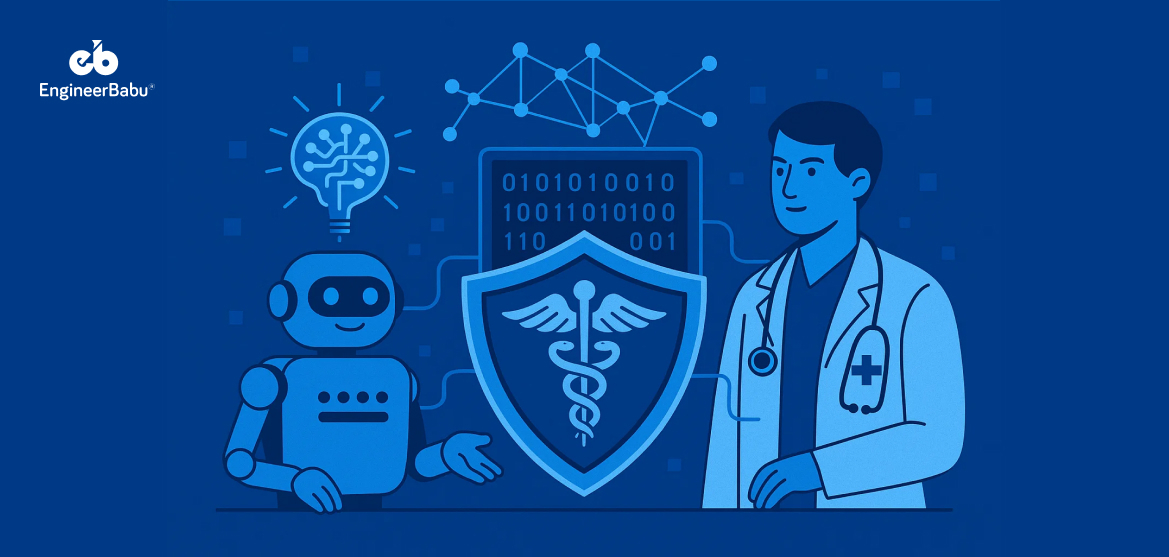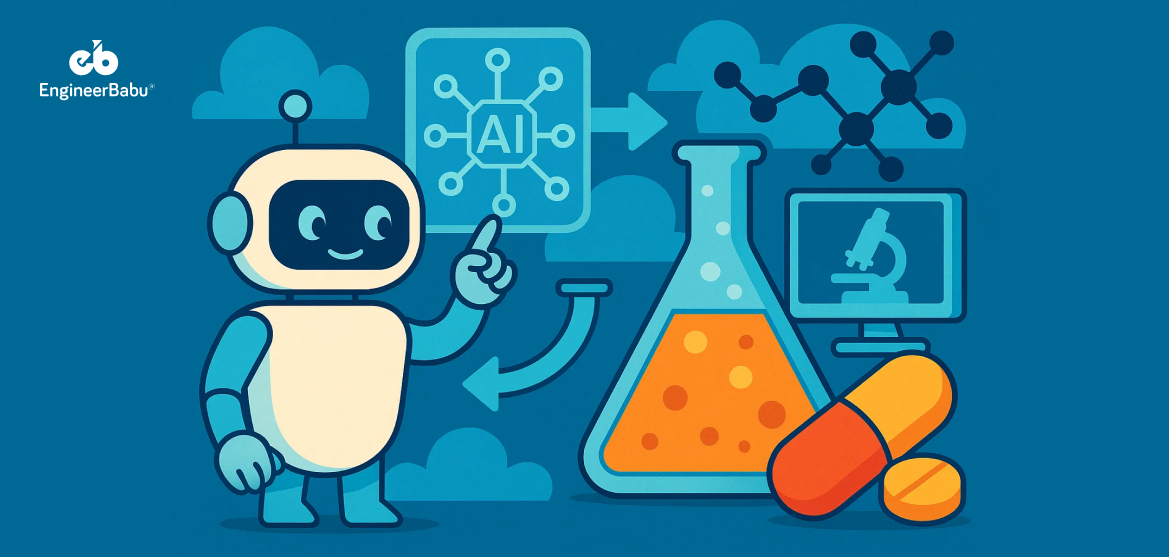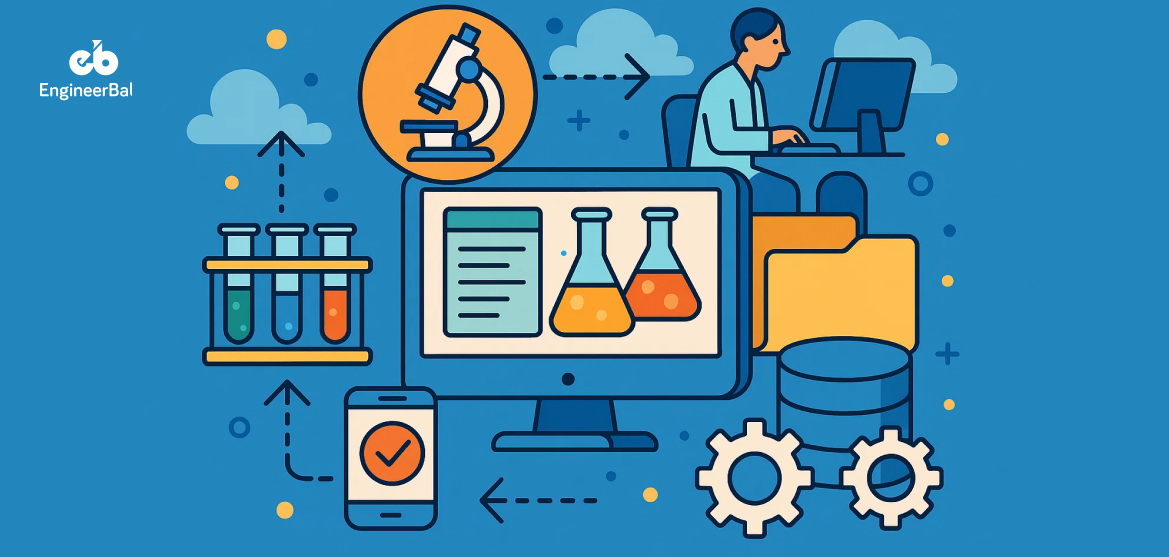Healthcare apps are no longer judged by novelty, they’re judged by usability. Patients want features that work, load fast, and make care simpler, not more complicated. From booking appointments to managing prescriptions, the experience needs to feel as smooth as any other modern digital service.
A survey by McKinsey found that 40% of patients prefer digital interactions for routine healthcare tasks like scheduling, prescription refills, and follow-ups. That number continues to grow as more people prioritize speed, access, and convenience over tradition.
But patient expectations aren’t just about access. They want security, personalized interactions, and the ability to get things done without switching between platforms. In this article, we’ll break down the most important features patients expect when using a telemedicine app—features that define trust, usability, and satisfaction.
Key Features of Telemedicine Apps
1. Easy Appointment Booking and Management
Patients don’t want to make phone calls, wait on hold, or navigate clunky portals just to see a doctor. A well-designed telemedicine app makes scheduling feel effortless. Users should be able to view available time slots, book an appointment, and receive confirmation within minutes, all from their phone.
Rescheduling and cancellations should be just as simple. Clear options, no hidden steps, and instant updates to both the patient and provider calendars. For many users, the ability to manage everything in-app is what sets a good experience apart from a frustrating one.
Some apps also let patients add appointments to their personal calendar and send reminders through push notifications or text. These small touches reduce no-shows and help people stay on top of their care without needing to be tech-savvy.
If booking a consultation takes more than a few taps, most users won’t come back. Simplicity is no longer a nice-to-have. It’s a core expectation.
2. Secure, High-Quality Video Consultations
A video consultation is the heart of most telemedicine visits. If the connection is glitchy or the audio cuts in and out, it doesn’t just frustrate the patient. It disrupts the clinical experience. Patients expect a clear, stable video call that feels personal and reliable, not like a tech test.
The platform should support high-resolution video and crisp audio, even on average mobile networks. Smart bandwidth management helps maintain quality, especially for users in rural or low-signal areas. A poor connection shouldn’t get in the way of care.
Security matters just as much as clarity. Patients want to know that their conversations are private. That means end-to-end encryption, password-protected sessions, and secure links that can’t be shared or reused. No one wants to worry about eavesdropping during a medical consultation.
A solid video experience builds trust. It makes people more likely to return, recommend the app, and stay engaged with their care.
3. Electronic Medical Records (EMR) Access
Patients don’t want to chase down their health records or wait days to see lab results. They expect to open the app and find everything clearly organized in one place. That includes visit summaries, test results, prescriptions, and doctor’s notes.
The layout should be clean, the language should be easy to understand, and important updates should be highlighted. Some platforms also let patients share records directly with other providers or download them for personal use, which saves time and reduces paperwork.
What makes this feature valuable isn’t just access. It’s the ability to stay informed without depending on phone calls, follow-ups, or third-party platforms. When patients can review their own information quickly, they feel more in control and more connected to their care.
4. Remote Patient Monitoring (RPM)
For patients managing chronic conditions, progress doesn’t happen just during appointments. It happens in between. That’s where remote patient monitoring comes in. It allows providers to track vital signs, symptoms, and health trends in real time, without the patient needing to visit a clinic.
The best telemedicine apps connect with wearables and smart devices. Blood pressure monitors, glucose meters, heart rate trackers, and even sleep monitors can sync directly to the app. This gives providers up-to-date information and lets patients see how their numbers are trending.
It also allows for proactive care. If something looks off, the care team can step in before it becomes a bigger problem. This builds trust and helps patients feel supported without needing to leave home.
For anyone with a long-term condition, this feature isn’t optional. It’s what makes virtual care feel personal, connected, and effective.
5. Digital Prescriptions and Pharmacy Management
After a consultation, patients expect quick and clear next steps. If a prescription is involved, they don’t want to print paperwork or call a pharmacy themselves. A telemedicine app should handle that part of the process smoothly.
Digital prescriptions allow providers to send medications directly to a pharmacy of the patient’s choice. The best apps let users track the status of their prescription, see dosage instructions, and request refills without needing another appointment.
For patients managing multiple medications, features like refill reminders, allergy alerts, and a full prescription history add real value. Some platforms also show nearby pharmacies, their stock availability, and even estimated wait times or delivery options.
This kind of integration keeps care moving. It saves patients time, prevents errors, and makes the entire treatment process more convenient from start to finish.
6. Geolocation for Nearby Services
When patients need lab work, imaging, or medication, the question is simple: where can I go, and how soon? A smart telemedicine app answers that by using geolocation to guide users to the closest available services.
Patients should be able to find nearby clinics, pharmacies, diagnostic centers, or emergency care without switching to a separate app or doing their own research. Map integration, directions, and estimated wait times can all be built into the experience.
Some platforms also filter based on insurance coverage or service availability, saving patients from making phone calls or arriving at the wrong place.
This feature makes the app feel connected to the real world. It shortens the path between diagnosis and action, which increases follow-through and builds patient confidence in the care process.
7. Real-Time Communication Helpline
Not every question needs a full consultation. Sometimes patients just need quick clarification, help with their app, or a follow-up on instructions. A real-time communication helpline gives them that direct line of support.
This feature can take the form of secure messaging, live chat, or voice support, depending on the situation. Patients appreciate knowing they can reach someone when they’re stuck or unsure—especially if it saves them from having to schedule another appointment.
The best systems also track conversations, so there’s no need to repeat information every time a new staff member responds. Whether it’s technical help or a clinical question, fast and accurate communication builds trust and keeps patients engaged.
Healthcare can be complex. A communication helpline makes it feel more human and more responsive.
8. Cloud-Based Data Storage
Patients expect their health information to be available whenever they need it. Cloud-based data storage makes that possible. It allows all records, prescriptions, lab results, and visit notes to be securely stored and synced across devices.
This means a patient can review their last consultation on a phone at home, then access the same details from a tablet during a pharmacy visit. Updates happen in real time, so everyone stays on the same page. Patients don’t have to keep physical copies or worry about losing important documents.
Security is key here. Data should be encrypted, access should be permission-based, and backups should run automatically. When patients feel confident that their health data is both accessible and protected, they’re far more likely to use the app regularly.
9. Smart Notifications and Reminders
Managing health involves a lot of moving parts—appointments, medications, follow-ups, and more. A good telemedicine app helps patients stay on track without needing to remember every detail on their own.
Notifications and reminders can alert patients to upcoming visits, prescription refill times, or even daily medication schedules. The most useful reminders are customizable, so users can choose how and when they’re notified through push alerts, email, or text messages.
It’s not just about convenience. These reminders help reduce missed appointments, improve medication adherence, and support better overall outcomes. For many users, these alerts are what keep care consistent and actionable.
10. Integrated Payment Gateways
Paying for care should be simple and transparent. Patients don’t want to call billing departments, send paper checks, or guess what’s covered. Integrated payment gateways allow them to pay securely within the app, immediately after their visit.
Support for credit cards, digital wallets, and local payment options helps accommodate different user preferences. Patients can also see cost breakdowns, access invoices, and get receipts without contacting support.
Clear payment flows reduce confusion and build trust. They also save administrative time for healthcare providers by automating a task that used to require multiple steps and follow-ups.
11. Insurance Verification and Claims Assistance
Before booking a visit, patients want to know if their insurance covers it. Real-time insurance verification removes the guesswork by checking eligibility and co-pays instantly.
By scanning or uploading their insurance card, users can see which services are covered and what their out-of-pocket costs will be. Some platforms even help patients file claims or track the status of pending reimbursements.
This level of transparency helps avoid surprise bills and supports better decision-making. When patients understand their benefits upfront, they’re more likely to complete care without delays or drop-offs.
Conclusion
Telemedicine isn’t just about virtual consultations. It’s about building a seamless digital care experience that works for patients every step of the way. From booking to billing, every feature in your app should reduce friction, improve clarity, and deliver real value.
Patients expect more control, better communication, and full visibility into their care. A thoughtfully designed app does all of that while also helping providers run more efficiently.
At EngineerBabu, we help healthcare companies build telemedicine platforms that match these expectations. Our teams specialize in secure, patient-friendly solutions that are built for real-world use. If you’re looking to create a platform that patients will actually use and trust, we can help you build it right.
FAQs
1. What are the most important features in a telemedicine app for patients?
Patients want simple scheduling, secure video calls, access to their records, prescription management, and real-time support. Features like integrated payments and insurance verification also help reduce confusion and improve satisfaction.
2. How does real-time communication improve the patient experience?
It allows patients to reach support quickly for questions or technical issues. This adds a personal touch, reduces stress, and helps resolve problems without unnecessary delays.
3. Why is cloud-based storage important in a telemedicine app?
Cloud storage ensures that patient data is secure, synced across devices, and always accessible. It also makes it easier for patients to share their records or revisit past consultations.
4. How does integrated insurance verification help users?
It shows patients what services are covered and what they’ll need to pay upfront. This prevents billing surprises and helps people make more informed decisions about their care.
5. Does EngineerBabu build custom telemedicine apps with these features?
Yes. EngineerBabu specializes in building custom telemedicine platforms tailored to the specific needs of hospitals, clinics, and healthtech startups. From secure infrastructure to user-friendly design, we focus on building apps that deliver real results for both patients and providers.




